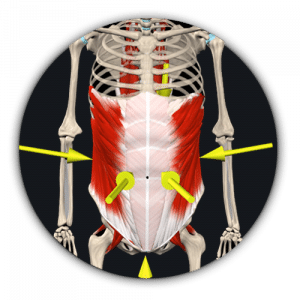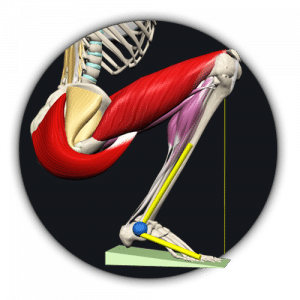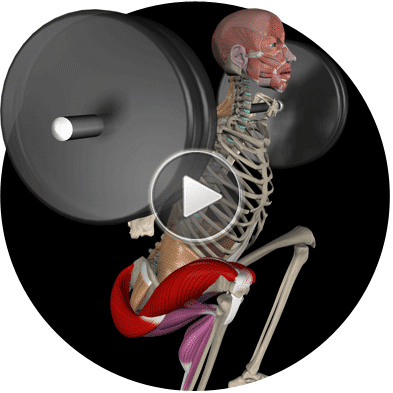Single-Leg Hip Hinge
Why is it a great exercise to train?
The Single-Leg Hip-Hinge, also known as Single-Leg Romanian Deadlift, is an excellent exercise for glutes, hamstrings and core muscles.
The hip hinge is one of the fundamental movements of many exercises. It’s a staple of deadlifts, squats, Olympic lifting, sprinting, and more.
So, where should I start?
When you begin incorporating this exercise, bodyweight is a good foundation to start with as training with bodyweight alone allows you to perfect the technique without the risk of overloading. This will reduce the risk of injury while increasing strength.
Before starting, these are a few points you should keep in mind when performing this exercise:
1. The movement is driven by the hip, not the back. Keep your back straight at all times.
2. The pelvis remains neutral throughout the exercise.
3. Spread weight evenly on the foot as mentioned above and make sure the knee doesn’t collapse inward.
That’s how to do it, step by step:
➜ Stand straight with feet together
➜ Plant the balancing leg into the floor (tripod foot)
➜ Lean forward from the hips and stretch arms forward while extending one leg back,
➜ Keep your back neutral, the toes are pointing toward the floor.
➜ Bend the balancing leg slightly to accommodate the forward bend of the upper body
➜ Return slowly to the standing position and repeat
Anatomical analysis
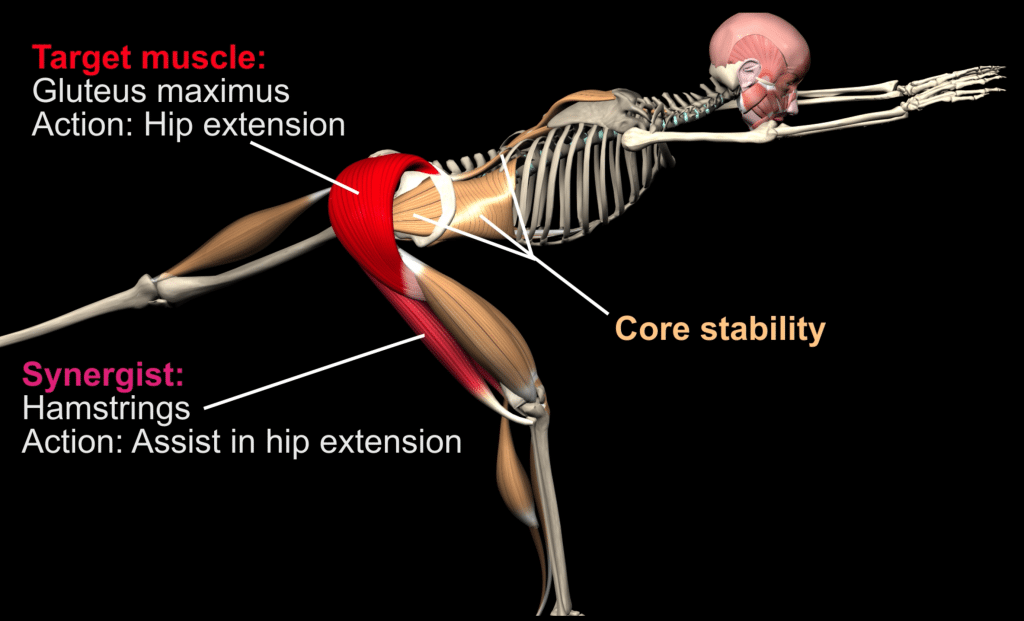
The target muscle is the Gluteus Maximus (colored red).
The Hamstring (dark-pink) assists in hip extension.
See below a posterior view of the pelvic floor muscles, Erector Spinae, and Transversus Abdominis colored light brown.
The pelvic floor muscles work with the deep abdominal and back muscles and the diaphragm to support the spine and control the pressure inside the abdomen.
One common mistake you need to know about
Spinal flexion without maintaining the spinal curves in a neutral position can lead to pain and injury.
The ability to keep our back straight depends on the hamstrings, so we must identify and know the angle of hip flexion at which the hamstrings pull and create a backward rotation of the pelvis.
Once the hamstring pulls, the movement is complete. You don’t want to push your torso down past that point or pull the extended leg further up.
As soon as the backward rotation of the pelvis occurs (posterior pelvic tilt), the lumbar spine loses its lordosis. And at this point, we are exposed to very high loads on the vertebrae.
To enable more flexing of the trunk, you can bend your knee to releases the Hamstrings.
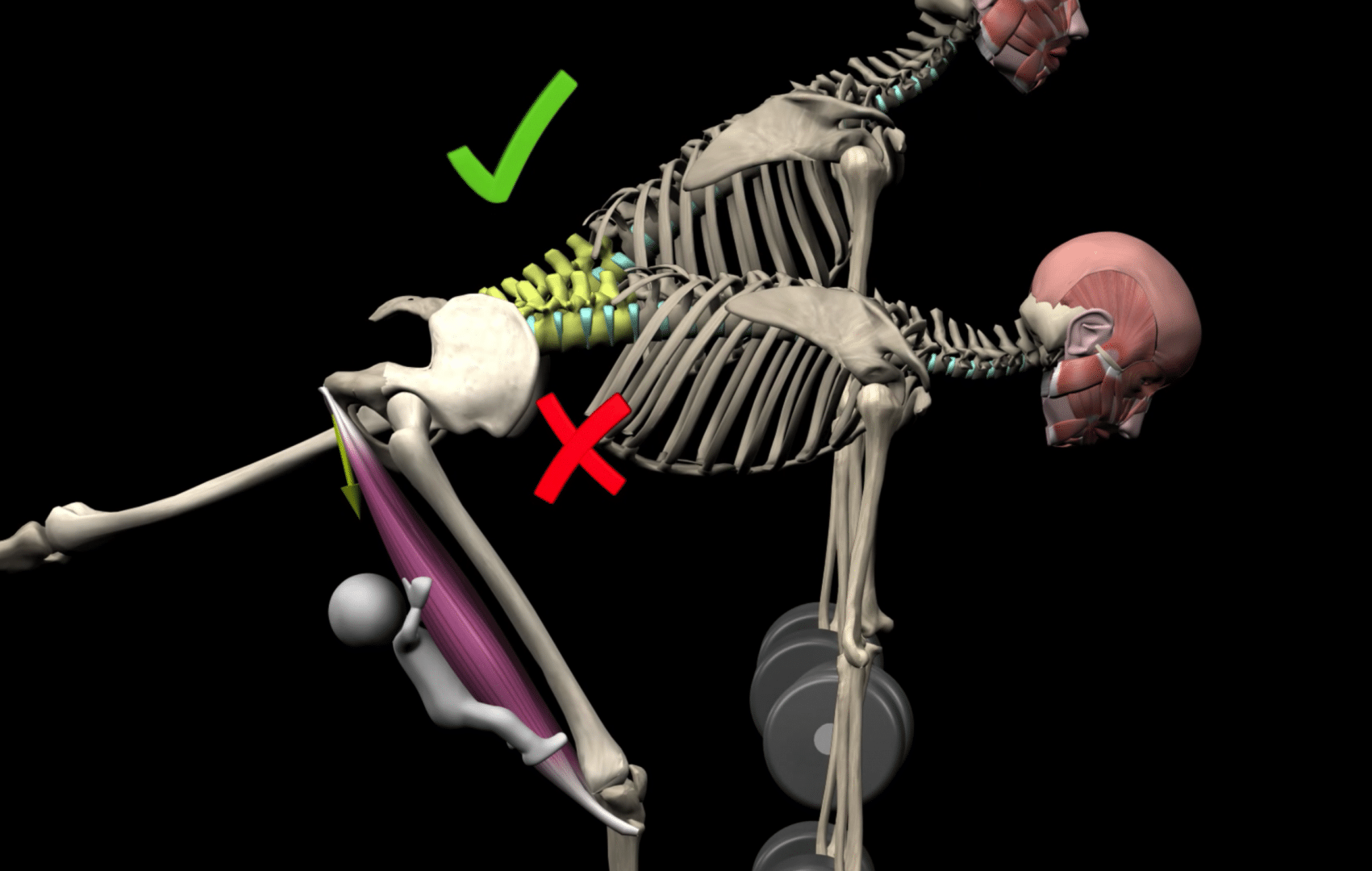
Once you have mastered this exercise and you want to advance the workout, add kettlebells or dumbbells to increase the load.
Target Muscles
➜ Gluteus Maximus
Synergists
➜ Hamstrings
Stabilizers
➜ Abdominal muscles
➜ Erector Spinae
➜ Gluteus Medius
➜ Pelvic Diaphragm (male)
➜ Diaphragm
Strength Training is an effective and practical way to maintain full-body health and good posture. It is essential to make sure that exercises and movements are performed correctly to maximize the benefits of your workout and reduce the risk of injury.
WE CAN HELP YOU TRAIN IN A SAFE, SMART AND HEALTHY MANNER.
Learn more about how the Strength Training app can help you upgrade your training sessions with a huge amount of knowledge.
Related posts
Abdominal Bracing
Abdominal bracing will strengthen your core, protect your back from injury, and give you more power.
